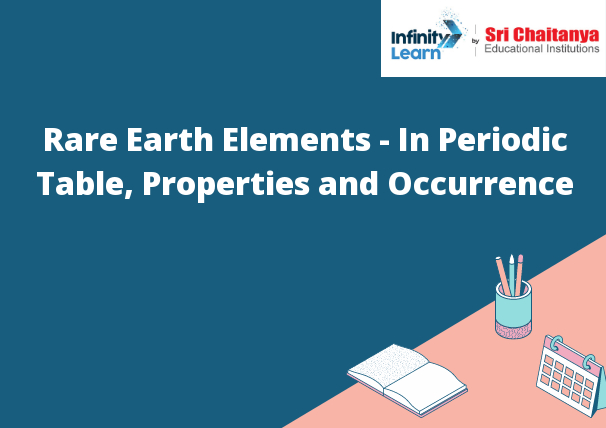Table of Contents
What are Rare Earth Elements?
Rare Earth Elements – In Periodic Table: Rare earth elements are a group of 17 elements that share similar chemical and physical properties. They are all metals that are typically silvery-white in color and are moderately reactive. Rare earth elements are usually found together in nature, and most deposits contain at least a few of them. They are not considered rare in the sense that they are rare to find, but they are rare in terms of the amount that is available for mining.

Rare Earth Elements in Periodic Table
- The periodic table is a tabular representation of the chemical elements, ordered by atomic number, electron configuration, and recurring chemical properties. The table divided into periods and groups, with the periods running from left to right, and the groups starting at the top left of the table and running down.
- Rare earth elements a set of seventeen chemical elements found in the Earth’s crust that are relatively rare in comparison to other elements. They are typically silvery-white metals that are soft and malleable. The most common rare earth elements are cerium, lanthanum, neodymium, and praseodymium.
- Rare earth elements typically found in minerals such as bastnäsite, monazite, and xenotime. They used in a variety of applications, including glassmaking, ceramics, and polishing agents. In recent years, there has increased interest in using rare earth elements in renewable energy technologies, such as wind turbines and electric vehicles.
Rare Earth Elements
- Rare earth elements, also commonly known as lanthanides basically the elements present in the top extended row placed below the main body of the periodic table and the rare earth metals stretched from Cerium (Ce) to Lutetium (Lu).
- The other rare earth metals situated in the third row as twenty-first and thirty-ninth metals. These are Scandium and Yttrium.
- They exhibit the same chemical properties as other lanthanides. The rare earth metals are generally trivalent in nature but sometimes fewer lanthanides show different valencies. For example, Cerium, Praseodymium and Terbium are tetravalent.
- On the other hand, samarium, europium and ytterbium are divalent in nature. All these rare earth materials are so similar in their chemical properties that 25% of their uses are the same but 75% of their usage is based on their unique properties.
- The most common use of rare earth metals is in magnets. They also used in catalysts, phosphors, optical materials, lasers and glass polishing. The reason why rare earth metals used in these applications is because of their unique chemical and physical properties.
- Many of these properties not found in other elements. For example, the lanthanides are the only elements that can form a +4 oxidation state. This means that they can form compounds that are not possible with any other element.
Properties of Rare Earth Metals
The physical and chemical properties of rare earth metals vary depending on the specific element. However, most rare earth metals are silvery-white, malleable, and ductile metals that are relatively stable in air and water. They are also good electrical and thermal conductors. In addition, many rare earth metals have a low melting point and are therefore easy to melt and cast.
Occurrence and Abundance of Rare Earth Elements in the Earth’s Crust
The concentration of rare earth elements in the Earth’s crust is about 2.5 parts per million (ppm). They not evenly distributed, but found in specific locations around the world.






